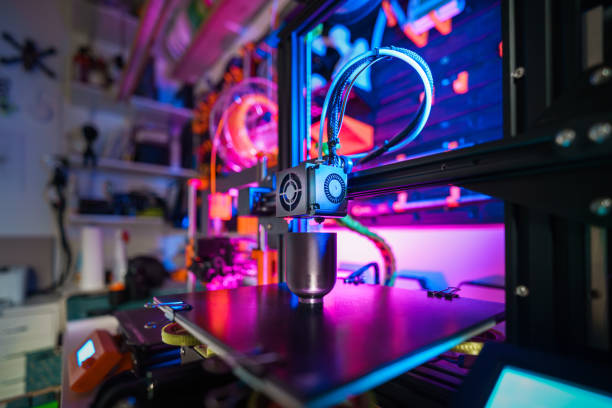In the modern world, data is more than just information. It is the bloodstream of businesses, governments, hospitals, financial institutions, and even personal lives. Every email sent, every transaction processed, every online medical record stored — all of it flows through vast digital arteries. But as the lifeblood of modern society, this data is under constant threat. Hackers, criminal syndicates, and even state-sponsored cyber warriors lurk in the shadows, probing for weaknesses.
Against this ever-present danger, organizations deploy an entity that serves as both shield and sentinel: the Security Operations Center, or SOC. It is not merely a room filled with screens and blinking alerts. It is the nerve center where skilled cyber defenders work tirelessly to detect, respond to, and neutralize threats before they can cause harm.
A SOC is not a passive observer; it is an active guardian. Imagine the command center of a spaceship, where a crew monitors every subsystem, ready to respond to the slightest anomaly — that’s the SOC in the realm of cyberspace. Its mission is simple yet daunting: protect the integrity, confidentiality, and availability of information in a world where the battlefield is invisible, and the attackers are relentless.
The Origins of the SOC
The idea of a centralized security monitoring hub emerged alongside the rise of complex computer networks in the late 20th century. In the early days of computing, security was an afterthought. Systems were closed, access was limited, and the threats were far less sophisticated. But as the internet expanded in the 1990s, so did the attack surface.
Viruses, worms, and malicious scripts began to circulate across networks like pathogens in a global bloodstream. Organizations realized that a piecemeal approach to security — scattered logs, ad-hoc responses, isolated monitoring — was no longer enough. They needed a dedicated environment where experts could watch over their networks in real-time, analyze incidents, and coordinate rapid responses.
The earliest SOCs were rudimentary compared to today’s standards. They relied heavily on human analysis and basic intrusion detection tools. Over the decades, as threats evolved from simple viruses to sophisticated ransomware campaigns and advanced persistent threats (APTs), SOCs transformed into highly specialized units, equipped with cutting-edge technology and multidisciplinary teams.
The SOC as a Living Organism
It’s tempting to think of a SOC as a physical place — and in many cases, it is: a secure room with rows of workstations, walls covered in large screens, and analysts in headsets studying streams of real-time data. But more importantly, a SOC is a living system, an organism made up of human expertise, automated tools, and well-defined processes.
Like a biological nervous system, the SOC senses danger through its detection mechanisms, processes that information in its analytical core, and then reacts by triggering defensive actions. Each part of the SOC plays a role in keeping the whole entity healthy and functional.
The SOC is not static. It adapts. Cyber attackers continually refine their methods — crafting new malware variants, exploiting fresh vulnerabilities, and using social engineering to trick even the most vigilant employees. The SOC responds in kind, evolving its detection rules, improving its incident response plans, and adopting emerging technologies like artificial intelligence and machine learning to stay ahead.
The Human Guardians Behind the Screens
At the core of any SOC are the people — the cyber defenders whose daily work is equal parts vigilance, investigation, and quick decision-making. They are the unseen heroes who fight battles most people never notice, preventing disasters that, if successful, could cripple entire organizations or even critical national infrastructure.
These professionals have diverse skills: some specialize in threat detection, others in incident response, others still in forensics or malware analysis. They work in shifts around the clock because cyber threats never sleep. At 3 a.m., when the rest of the office is dark, the SOC is still alive, its analysts watching streams of data for anything out of place.
Working in a SOC can be both exhilarating and exhausting. The stakes are high, and the margin for error is slim. An overlooked alert could mean the difference between stopping a ransomware attack in its infancy and facing millions of dollars in damages. But there’s also a sense of pride and purpose in the work — a feeling of contributing to something vital and protective.
The Tools and Technology of the SOC
Modern SOCs are built on an arsenal of advanced tools. These range from Security Information and Event Management (SIEM) platforms, which aggregate and correlate logs from across the organization’s systems, to Endpoint Detection and Response (EDR) tools that monitor individual devices for suspicious activity.
There are intrusion detection and prevention systems, firewalls, and threat intelligence feeds that provide insight into emerging global attack patterns. Machine learning algorithms sift through mountains of data, spotting anomalies humans might miss. Automation tools can trigger immediate containment measures, such as isolating an infected device or blocking malicious network traffic.
But technology alone is not enough. Every SOC tool is only as effective as the people who configure, interpret, and respond to its output. A false sense of security can emerge if the tools are left on autopilot without the critical thinking and contextual understanding that human analysts provide.
The SOC Workflow
The day-to-day life of a SOC revolves around a cycle of activities. Threats are detected through continuous monitoring, often triggered by unusual patterns in network traffic, suspicious login attempts, or alerts from security tools. Once an alert appears, analysts investigate, gathering evidence and determining whether it’s a false positive or a genuine incident.
If it is real, the SOC moves into containment mode — stopping the threat from spreading or causing damage. This may involve quarantining devices, revoking compromised credentials, or blocking specific IP addresses. Once the threat is contained, the SOC works on eradication, removing any malicious software and patching vulnerabilities.
Finally, there’s recovery — restoring systems to normal operation — and the crucial step of post-incident analysis. Every incident is a learning opportunity. SOC teams study what happened, how it was detected, and how future defenses can be improved.
The SOC and the Wider Organization
A SOC does not operate in isolation. It works hand-in-hand with other parts of the organization: IT teams, network engineers, compliance officers, and executive leadership. Communication is essential. In a crisis, the SOC must be able to explain the situation in terms decision-makers can understand — translating technical details into business risk.
The SOC also plays a preventive role. It conducts threat hunting exercises, educates employees about phishing and other social engineering attacks, and participates in strategic planning for long-term security posture.
In some cases, SOCs are centralized in a single location. In others, they are distributed across multiple sites, or even outsourced to specialized Managed Security Service Providers (MSSPs) who offer SOC capabilities to organizations without the resources to build their own.
The Emotional Landscape of SOC Work
There’s an emotional dimension to SOC operations that is rarely discussed outside the cybersecurity community. Analysts live in a state of constant alertness, their attention divided between routine monitoring and readiness for sudden emergencies. The mental load can be intense: every spike in network traffic could be harmless — or it could be the start of a devastating breach.
The adrenaline of responding to a real incident can be addictive, but it also carries risks of burnout. That’s why well-functioning SOCs emphasize not only technical excellence but also the mental well-being of their teams. Rotating shifts, clear escalation procedures, and supportive leadership all play a role in keeping defenders sharp and resilient.
The Global Context
In the interconnected world of the 21st century, SOCs are not just corporate assets — they are part of a global ecosystem of defense. A ransomware gang targeting hospitals in one country may have its infrastructure traced to another. An advanced persistent threat linked to a state actor may be identified by a SOC thousands of miles away.
Through sharing threat intelligence and collaborating across borders, SOCs form an informal but vital network of cooperation. This global solidarity among defenders stands in stark contrast to the competitive and often hostile landscape of the attackers.
The Future of SOCs
The role of the SOC is evolving rapidly. As organizations migrate to cloud infrastructure, SOCs must adapt to monitor environments that are no longer confined to on-premises data centers. Cloud-native SOCs use specialized tools to track activity across virtual networks, containerized applications, and distributed workloads.
Artificial intelligence will play an increasingly central role, helping SOCs sift through ever-larger volumes of data and even predicting attacks before they occur. But the human element will remain irreplaceable. AI may spot patterns, but it cannot yet fully understand context, intent, and the subtle human factors behind cyber incidents.
SOCs will also have to grapple with the blurring boundaries between cyber and physical security. The rise of the Internet of Things (IoT) means that attacks can now target not just data, but physical systems: power grids, transportation networks, and even medical devices. The SOC of the future will need expertise that spans both digital and physical domains.
The SOC as a Symbol
Beyond its technical role, the SOC is a powerful symbol of our age. It embodies the vigilance required to live in a connected world. It is a reminder that our digital lives are not free of danger, but also that we have the means — through skill, coordination, and dedication — to protect ourselves.
A well-run SOC is like a lighthouse in the storm: its beam sweeps constantly across the dark waters, searching for signs of danger, guiding ships safely to harbor. And like the lighthouse keeper, SOC analysts work quietly and often anonymously, their successes measured in disasters that never happen.
The Ongoing Mission
A Security Operations Center is never “finished.” Threats evolve, technologies change, and attackers find new angles of approach. The SOC’s mission is ongoing, requiring constant vigilance, learning, and adaptation. It is not just a place where cybersecurity happens — it is where an organization’s resilience is forged, tested, and renewed every day.
For all the technical sophistication, the SOC’s ultimate strength lies in something timeless: the human drive to protect. Whether it’s guarding a medieval castle, defending a city from air raids, or monitoring a network for digital intruders, the essence is the same. People, working together with purpose and skill, standing between danger and safety.
And as long as there are threats in the digital world, there will be SOCs — watching, learning, and quietly winning battles most of us never see.






